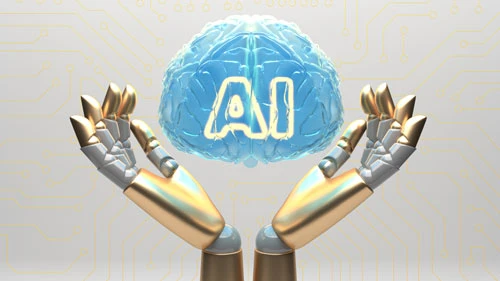Open-source software has revolutionized how software is developed and distributed, providing access to a wealth of powerful and customizable tools for developers worldwide. However, with the increasing popularity of open-source ecosystems, there has been a rising trend of malicious packages being introduced into these ecosystems.
These malicious packages can include malware, viruses, and other forms of malicious code that can cause significant harm to users and systems. This blog post will discuss the rising trend of malicious packages in open-source ecosystems and how to mitigate them.
How are Malicious Packages Being Introduced in Open Source Ecosystems?
Open-source ecosystems are vulnerable to malicious packages for many reasons. One of the main reasons is the lack of strict control over who can contribute to open-source projects. Anyone can contribute code to an open-source project, meaning verifying the quality and security of the code being introduced into the ecosystem is difficult.
Another reason is the lack of effective security measures in place to prevent the introduction of malicious packages. Open source ecosystems are often decentralized and rely on trust between developers to ensure the integrity of the code being contributed. This trust can be exploited by malicious actors who introduce malicious packages into the ecosystem.
Malicious Packages on the Rise in Open Source Environments
The rising trend of malicious packages in open-source ecosystems is a growing concern for developers and organizations alike. In recent years, there have been several high-profile incidents where malicious packages have been introduced into open-source ecosystems, causing significant damage to systems and users.
One such incident occurred in 2018 when a malicious package called event-stream was introduced into the popular Node.js ecosystem. The package contained malicious code designed to steal Bitcoin wallets from users who had downloaded the package. This incident highlighted the vulnerability of open-source ecosystems and the need for better security measures to prevent the introduction of malicious packages.
How to Mitigate the Risk of Malicious Packages in Open-Source Ecosystems
Several measures can be taken to mitigate the risk of malicious packages in open-source ecosystems. These measures include:
1. Code Review
One of the most effective ways to prevent the introduction of malicious packages is to conduct thorough code reviews. Code reviews involve examining code contributions to ensure they meet quality and security standards. This can help identify and remove malicious packages before they are introduced into the ecosystem.
2. Vulnerability Scanning
Vulnerability scanning involves using automated tools to scan code for known vulnerabilities and security issues. This can help to identify and remove any potential security risks before they are introduced into the ecosystem.
3. Access Control
Access control involves implementing strict controls over who can contribute to open-source projects. This can include requiring contributors to undergo a vetting process or limiting access to certain parts of the codebase. By implementing access control measures, it is possible to reduce the risk of malicious packages being introduced into the ecosystem.
4. Security Testing
Security testing involves testing code for potential security vulnerabilities and weaknesses. This can include penetration testing and other security testing to identify and mitigate potential security risks.
5. Continuous Monitoring
Continuous monitoring involves monitoring the ecosystem for any signs of malicious activity or suspicious behavior. This can help identify and respond to potential threats before they can cause significant damage.
The rising trend of malicious packages in open-source ecosystems is a growing concern for developers and organizations. However, implementing effective security measures can mitigate the risk of malicious packages being introduced into open-source ecosystems.
As the popularity of open-source ecosystems continues to grow, developers and organizations must take steps to ensure the security and integrity of these ecosystems.
Artificial intelligence (AI) has become an increasingly popular tool for automating repetitive tasks and increasing efficiency across various industries. In the realm of software development, AI is often used to generate code, automate testing, and even deploy applications.
While AI has certainly made significant strides in this area, there are still some things that only humans can do when it comes to coding and DevOps. This blog post will explore what AI code writing can't do that only humans can.
1. Expressing Creativity
One of the essential things AI code writing can't do is exercise creativity. While AI can certainly generate code based on predetermined rules and patterns, it lacks the ability to come up with truly original ideas. This is because creativity is a uniquely human trait influenced by factors such as personal experience, emotions, and intuition.
In DevOps, creativity is essential for tasks such as problem-solving and innovation. For example, if a software application encounters a problem, an AI algorithm may be able to suggest solutions based on previous instances of the same issue. However, a human developer can come up with a completely new and innovative approach that an AI algorithm could not have predicted.
2. Understanding the Big Picture
Another thing AI code writing needs help with is understanding the big picture. While AI can certainly analyze and process vast amounts of data, it cannot comprehend the broader context in which that data exists. This is particularly important in DevOps, where a software application is typically just one part of a more extensive system or ecosystem.
Human developers can consider the larger context of a software application and how it interacts with other systems and stakeholders. This allows them to make decisions that are in the best interest of the entire system rather than just optimizing for a single metric or objective.
3. Empathy
Empathy is another trait that AI code writing can't replicate. While AI can simulate human conversation and interaction to a certain extent, it cannot truly understand and respond to human emotions. This is particularly important in DevOps, where developers often work with end-users or stakeholders who may have strong emotions or opinions about the software they are using.
Human developers can empathize with end-users and stakeholders and respond to their needs and concerns. This allows them to build software that meets functional requirements and provides a positive user experience.
4. Common Sense
While AI algorithms are becoming increasingly sophisticated, they still lack the common sense humans possess. Common sense is the ability to make practical judgments based on experience and knowledge of the world. This is particularly important in DevOps, where developers often face complex problems that require practical solutions.
Human developers can apply their common sense to find practical solutions to complex problems that AI algorithms may struggle with. This allows them to make decisions that are not only technically sound but also practical and effective.
5. Adaptability
Finally, AI code writing can't match the adaptability of human developers. While AI algorithms can certainly be programmed to adapt to new situations, they lack the ability to learn and adapt on their own. This is particularly important in DevOps, where the software development landscape constantly evolves.
Human developers are able to adapt to new situations and learn from their experiences. This allows them to stay up-to-date with the latest trends and technologies and make informed decisions about building and deploying software applications.
While AI code writing has undoubtedly made significant progress in recent years, there are still some things that only humans can do when it comes to coding and DevOps.
Human developers will continue to play a critical role in the future of software development, working collaboratively with AI algorithms to augment human creativity and productivity.
By leveraging the strengths of AI and human developers, we can build more innovative and efficient software applications that meet functional requirements and provide a positive user experience.
DevOps is a set of practices that combines software development and IT operations to enable organizations to deliver software faster and more reliably. One of the key challenges in DevOps is ensuring the security of the code being developed and deployed. With the rapid advances in artificial intelligence (AI) and machine learning (ML), there is a growing question of whether AI can write secure code.
While AI is capable of many impressive feats, including generating code, it still needs to be able to write secure code with complete accuracy. AI-generated code may have vulnerabilities attackers can exploit, as AI models are only as good as the data they are trained on. The AI model may learn to generate insecure code if the training data includes insecure code.
Furthermore, code security is not just about preventing vulnerabilities but also protecting against intentional attacks. For example, an attacker may try to exploit a vulnerability by using a technique known as a buffer overflow. In this scenario, the attacker sends more data than the buffer can hold, causing the program to crash or execute arbitrary code. While AI models may detect and fix some buffer overflow vulnerabilities, they may not be able to protect against all forms of attack.
Another challenge with using AI to write secure code is the complexity of modern software systems. Current software is typically composed of multiple components, each with its own set of vulnerabilities and potential security issues. Writing secure code requires a deep understanding of the system as a whole, which may be beyond the capabilities of an AI model.
Despite these challenges, AI can still play a valuable role in improving the security of code in DevOps. One way in which AI can be used is by automating code review and analysis. AI models can analyze large volumes of code to identify potential vulnerabilities and provide recommendations for fixing them. This can save developers time and help identify issues that might be missed.
Another way in which AI can be used to improve the security of code is by providing developers with real-time feedback as they write code. For example, an AI model can analyze the code being written and provide suggestions for improving its security. This can help to prevent vulnerabilities from being introduced in the first place, reducing the need for costly and time-consuming code reviews later on.
In conclusion, while AI is not yet capable of writing completely secure code, it can still play an important role in improving the security of code in DevOps. By automating code review and analysis and providing real-time feedback to developers, AI can help to identify potential vulnerabilities and prevent them from being introduced in the first place. As AI technology advances, we can expect to see even more powerful tools and techniques for improving code security in DevOps.
Technology advances and evolves, so do the approaches and methodologies in software development. One of the most significant shifts in recent years has been the adoption of containerization and microservices in DevOps. These two technologies are changing how software is developed, deployed, and managed, offering a range of benefits over traditional monolithic application architectures.
What is Containerization?
Containerization is packaging an application and its dependencies into a single unit known as a container. A container is a lightweight, standalone executable package that includes everything needed to run the application, including the code, runtime, system tools, libraries, and settings. Containers provide a consistent and portable environment for running applications, regardless of the underlying infrastructure.
One of the primary advantages of containerization is its ability to simplify application deployment and management. Containers can be easily deployed to any environment that supports containerization, such as Kubernetes, Docker, or OpenShift. This means applications can be deployed quickly and reliably without complex configuration or installation processes.
What are Microservices?
Microservices are an architectural approach to software development that involves breaking an application down into a set of small, independent services. Each service performs a specific function or task and communicates with other services using APIs. Microservices offer several benefits over traditional monolithic application architectures, including improved scalability, reliability, and flexibility.
With microservices, each service can be developed, deployed, and managed independently of the others. This makes updating, modifying, or replacing individual services easier without affecting the rest of the application. It also allows teams to work on different application parts simultaneously, speeding up the development process.
Why are Containerization and Microservices the Future of DevOps?
Containerization and microservices transform how software is developed, deployed, and managed in DevOps. Together, they offer a range of benefits over traditional monolithic application architectures, including:
- Improved Scalability: With containerization and microservices, applications can be scaled up or down easily and quickly based on changing demand. This allows organizations to respond more effectively to spikes in traffic or demand without worrying about over-provisioning or under-provisioning resources.
- Enhanced Reliability: Containers are designed to be highly portable and resilient, making them ideal for DevOps environments. Because containers are isolated, issues in one container won't affect other containers or the host system. This makes it easier to troubleshoot issues and maintain the system's overall health.
- Greater Flexibility: Containerization and microservices allow for greater application development and deployment flexibility. With microservices, teams can work on different parts of the application simultaneously, while containerization makes it easy to deploy applications to any environment that supports containers.
- Faster Time to Market: Developing teams can work more quickly and efficiently by breaking down applications into smaller, independent services. This can help organizations bring new products and features to market faster, giving them a competitive edge.
- Improved Security: Containerization provides an added layer of security by isolating applications from one another and the host system. This can help prevent security breaches and limit the damage in the event of an attack.
Containerization and microservices transform how software is developed, deployed, and managed in DevOps. They offer a range of benefits over traditional monolithic application architectures, including improved scalability, reliability, flexibility, faster time to market, and improved security. As organizations continue to adopt these technologies, we can expect to see even greater innovation and advancements in the field of software development.


